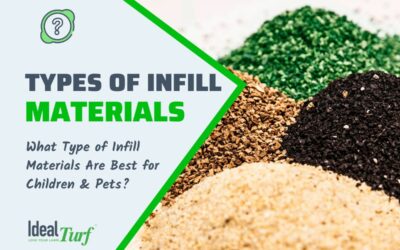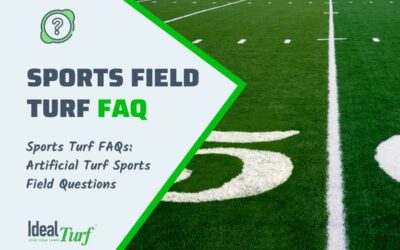Dog-Friendly Backyard: The Best Landscape Designs for Dogs
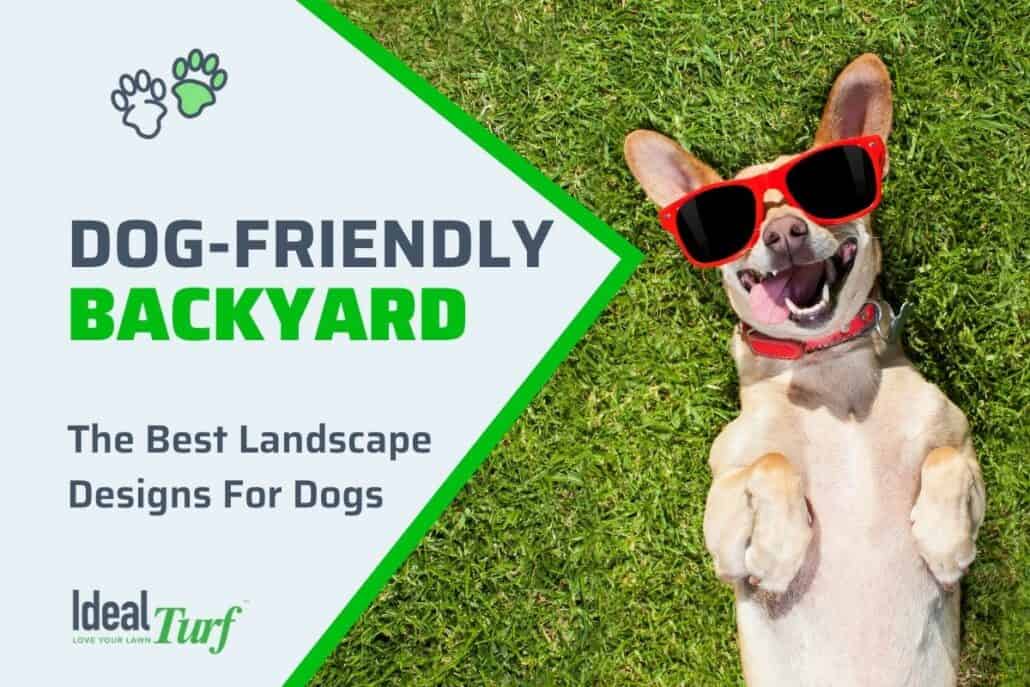
- What is a “Dog-Friendly Backyard?”
- Problems Commonly Faced by Dog Owners
- Dog-Friendly Backyard Landscaping Ideas
- Final Thoughts on Creating a Dog-Friendly Backyard
It’s common knowledge that when a child becomes mobile, it’s time to baby-proof the house.
Parents cover power outlets and remove items that would be dangerous for the baby to chew on, swallow, pull down, or spill.
And let’s face it—it’s as much for the parent’s benefit as the babies, as babies can wreak havoc on a house.
But did you ever think to give the furry family members the same treatment?
Between the digging and doggy-do, dogs can cause as much damage to a yard as a baby can to a living room.
And like babies, you need to make sure they don’t ingest anything dangerous, which includes some innocent-looking landscaping plants.
Creating a dog-friendly backyard doesn’t need to be difficult.
In this article, we’ll equip you with a host of ideas on pet-safe ground cover, the best ways to control your dog’s damage to the lawn, plants to avoid for your dog’s safety, and a variety of tips for maintaining a yard that meets the needs of your dog without sacrificing visual appeal or overall function.

What is a “Dog-Friendly Backyard?”
A dog-friendly backyard is a place your pup can play, run, sniff, chase, and, well, be a dog.
It’s also a spot where you don’t have to hover over your pooch, wondering if she will eat the flowers or destroy the grass with urine spots.
There are several improvements you can install to make your yard more dog-friendly, like pet-turf, for instance.
Let’s dive into a few common backyard problems dog owners deal with and how to solve them.

Problems Commonly Faced by Dog Owners
By introducing a dog into the family, most homeowners agree to take the good with the bad. (The puppy snuggles are worth it, right?)
They resign themselves to the fact that their yard will never be perfect.
Here are a few common reasons why.

Digging
While it’s definitely worse in the puppy stage, dogs of every age and breed dig holes.
In fact, some breeds (like terriers) were specifically developed to hunt underground animals.
Others get the digging instinct from their wolf ancestors, who buried their kills so they wouldn’t get stolen by other animals.
Still, other dogs dig when they are bored, anxious, or trying to escape the yard.
While digging is only natural for the dog, it can be maddeningly frustrating for you.
Fixing the spots that Fido has torn up can be time-consuming and expensive.

Dog Urine Spots
Even if your dog isn’t a digger, his urine may cause just as much destruction as his paws do.
Dog urine spots in the backyard are a common complaint of many homeowners.
The nitrogen content and pH of dog pee are the culprits for those unsightly dead spots in your lawn.
While there are methods to prevent dog urine spots (changes in diet, hosing down the yard, or training your dog to ‘go’ in one spot), they aren’t always easy or practical.

Muddy Paw Prints
Even when the yard looks great, dogs seem bent on bringing whatever is outside back inside.
Muddy pawprints are cute in commercials or Hallmark cards, but irritating on your carpet or furniture.
Unfortunately, there isn’t much you can do to prevent this with a natural grass yard, short of keeping the dog inside all the time (which makes for a sad pooch).

Dog-Friendly Backyard Landscaping Ideas
Even with all the inherent problems, most dog owners consider their canine companions to be members of their family.
Given how much unconditional love and loyalty dogs offer, you naturally want to provide them with a safe, clean, dog-friendly backyard environment for running, playing, and having fun.
Below are the top improvements homeowners can make to transform their yard into a puppy paradise.

Build a Dog Run or Pet Area
A dog run is an ideal spot for your dog to burn off her energy, play, and relieve herself without you having to worry about what she’ll do to the rest of the yard.
With a dog run, waste is contained in just one spot, and brown urine marks are a thing of the past.
Dog run cleaning and maintenance is simple and straightforward.
If you have a large backyard but can’t afford to or don’t want to replace the entire lawn with a dog-friendly ground cover, building a dog run is a great alternative.
One of the most common residential artificial turf applications is in dog runs and designated dog potty areas.
It’s also great for Texas homeowners who like to entertain outdoors, but need to keep excitable pups away from guests.

Add a Water Feature
Adding a water feature converts your yard to puppy heaven.
The Texas sun can be hot and unrelenting, so a small pool will help your dog stay hydrated, provide entertainment, and add a unique element to your dog-friendly backyard design.

Shade & Shelter
Shady trees and shrubs might be a luxury for some homeowners, but in Texas, shade is essential.
Just like you, your dog needs to escape to a shady spot in the heat of the day.
This is an absolute must for dog owners who keep their pups outside for any length of time.
Shade and shelter also offer relief in case your dog is stuck outdoors in bad weather.

Living, Dog-Friendly Ground Covers
The most popular ground cover for any lawn is grass.
It’s cool, looks appealing, and is (relatively) easy to care for.
However, there is much more variation in the durability, growth pattern, and dog-friendliness among grasses than most homeowners realize.
No natural grass is 100% dog-proof, and digging and urine spots are inevitable.
As a dog owner, if you’re committed to keeping a natural grass lawn, you should dial down your expectations and consider one of the following dog-friendly, natural grass options.

Bermuda Grass
Bermuda grass is a warm-weather grass and thrives in hotter climates.
While it can tolerate high amounts of sun, it also doesn’t require much watering.
Resistant to stress, its deep roots anchor it well against sports and pet play.

Zoysia Grass
Zoysia grass is sturdy and great for drought-tolerant landscaping.
Zoysia has deep roots, which makes it a slow grower.
Perfect for warmer climates, Zoysia can withstand high heat and infrequent watering.

Centipede Grass
Centipede grass is quick-growing, tolerant to heat, and doesn’t require much upkeep.
That said, it’s sensitive to alkaline soil and unable to grow properly in imperfect weather conditions.
Centipede grass usually flourishes best in the southwestern United States.

Buffalo Grass
Buffalo grass is a low-water, drought-resistant grass.
It can be bought as seed or plugs from nurseries.
Buffalo grass is thin and appears fragile, but it’s resilient and grows to three inches tall with little care.

Kentucky Bluegrass
Kentucky bluegrass is quick-growing and commonly used to patch bare spots in other types of lawns.
It can withstand heavy traffic and can reseed itself.

St. Augustine
St. Augustine grass has deep roots and might be a good option if you have a dog that loves to dig.
However, it will not do well in high-traffic areas or with excessive dog urine.

Tall Fescue
According to the University of California-Davis, Tall fescue Grass tolerates lawn burn from pet urine better than other grasses.
Tall fescue has deep roots and wide blades, which makes it a slow grower but resilient and able to withstand heavy foot traffic.
If you’re planning on using natural grass when creating your dog-friendly backyard, Tall Fescue Grass is probably your best option.

Non-Living, Dog-Friendly Ground Covers
It’s a myth that your lawn has to be grass.
In fact, there is a whole wide world of ground covers that are both dog-friendly and resilient, which aren’t alive at all!
In Texas, maintaining a natural grass landscape is difficult enough without a dog.
The difficulty is exacerbated by the presence of your pooch.
Used mostly in designated areas (like a dog run), the following are pet-safe ground covers that don’t require water and are safe for dogs and other pets.
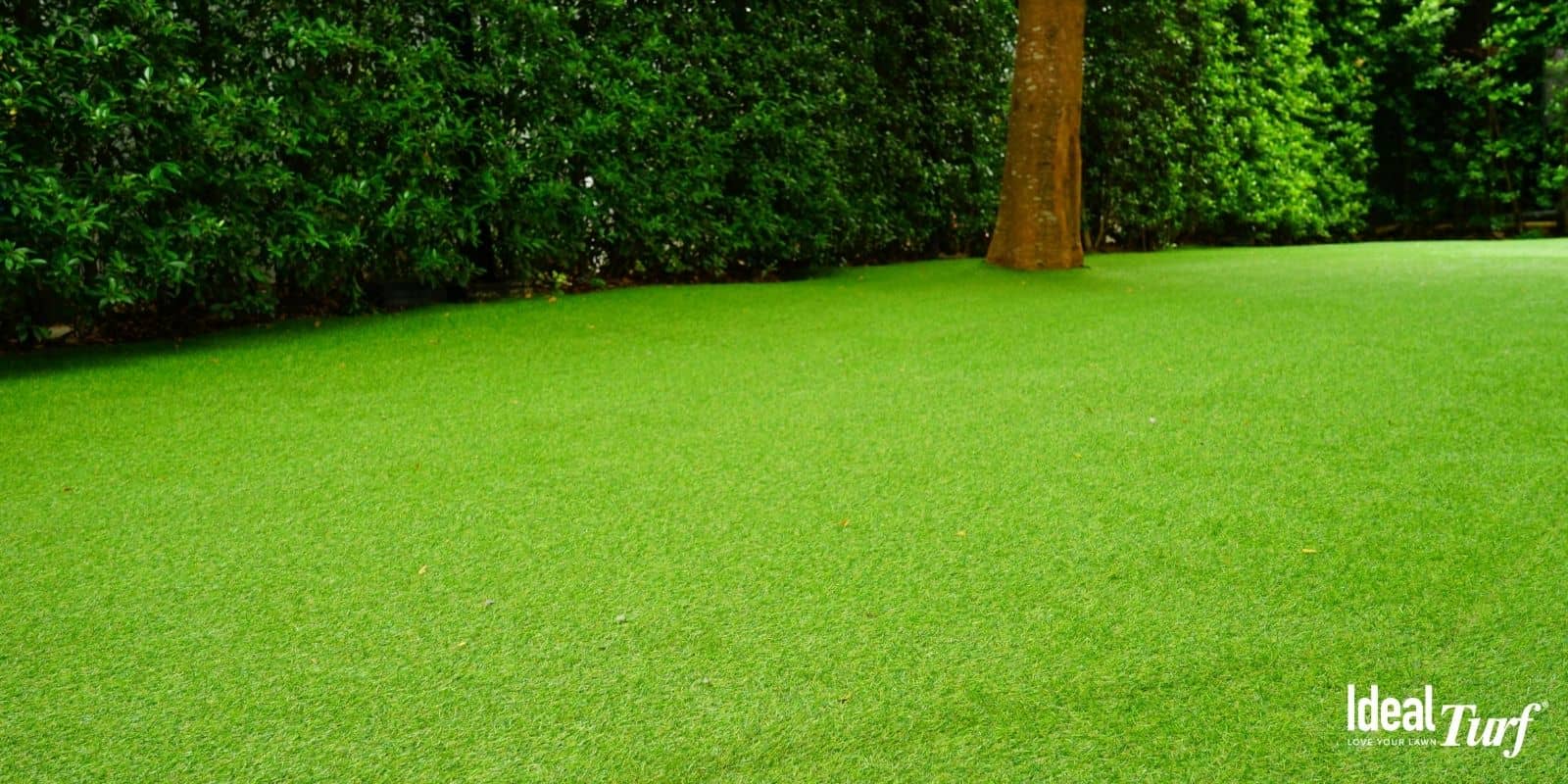
Artificial Grass for Dogs or “Pet Turf”
One option that has quickly increased in popularity recently is “Pet Turf” or artificial grass for dogs.
Contrary to common artificial turf myths & misconceptions, manufactured grass is 100% safe for pets and children.
Homeowners and pet-care facilities throughout Texas are replacing natural grass with fake grass to avoid many of the problems associated with natural lawns.
While installing synthetic grass does require an initial investment, our clients find that artificial grass is worth the money and that it offers numerous benefits.
With this long-lasting, low-maintenance, and natural-looking ground cover, you provide your pups with a safe and clean environment to play in for years to come.
Installing fake grass for dogs will benefit families and their canine companions in the following ways:
- Save time and money on water
- Reduce maintenance costs
- Prevent digging problems
- Cleaner dogs (no more muddy paw prints!)
- Boosts curb appeal and outdoor aesthetics
- Eliminates potentially harmful chemicals found in fertilizers and pesticides
- Increases home value
For help deciding which turf product is right for your space, check out our complete buyer’s guide to the best artificial grass for dogs.

Pea Gravel
Pea Gravel is another dog-friendly ground cover option.
The smooth stones will be gentle on your dog’s paws.
As a bonus, gravel is usually an inexpensive ground cover material.
That said, if your yard does not have adequate shade, gravel can heat up in the sun and burn your dog’s paws.
For larger dogs, small gravel can get stuck between the pads of their paws.
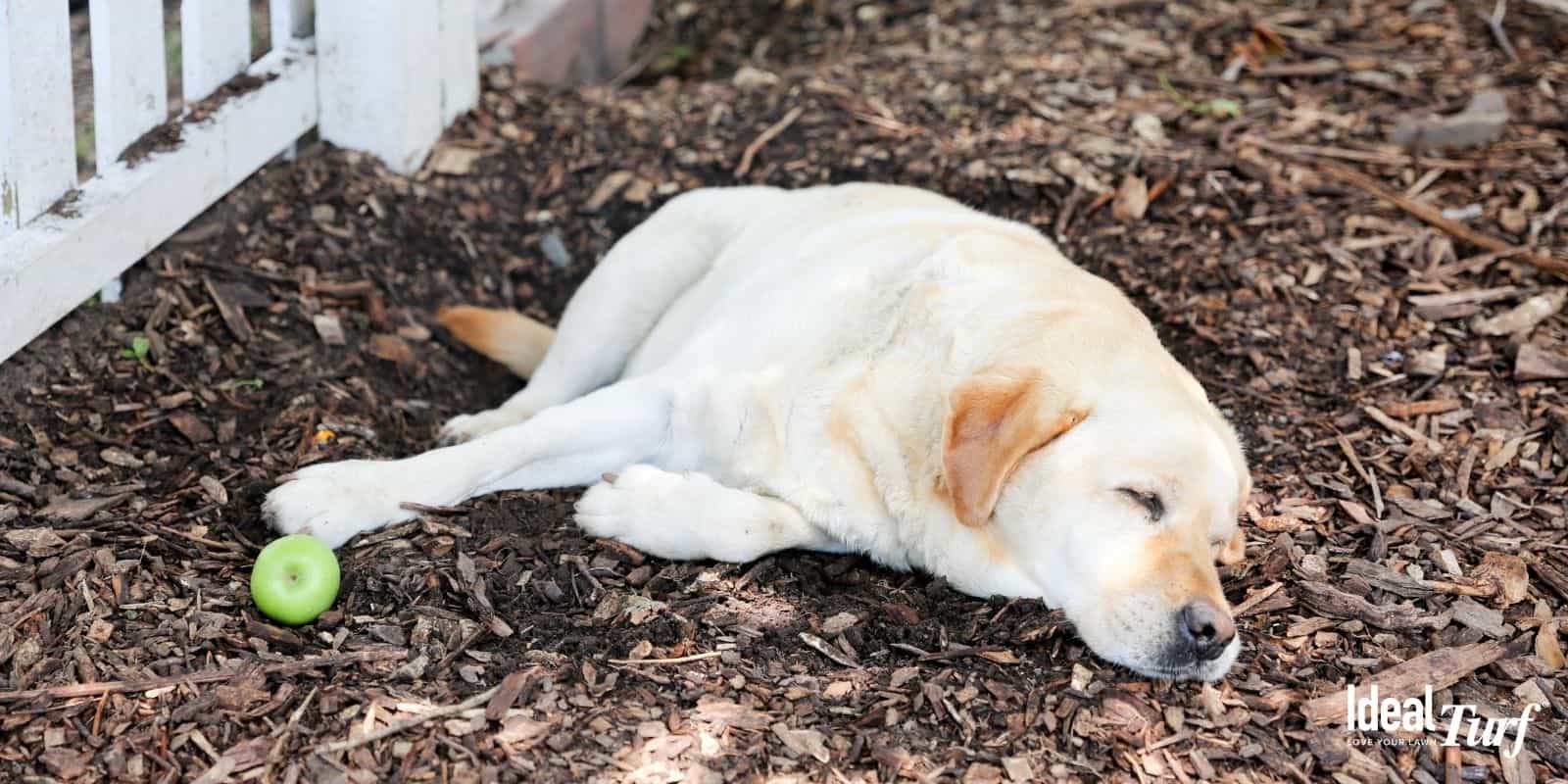
Wood Chips / Mulch
Some homeowners use wood chips or mulch as a ground cover.
It’s safe and inexpensive, and cedar mulch has the added benefit of being a natural bug repellant to fight off fleas and ticks.
If you do choose wood chips or mulch for your yard, do NOT use “Cocoa Bean” mulch, which is harmful to dogs if ingested.

Dog-Safe Landscaping Plants
A dog-friendly yard is first and foremost a safe place.
Given dogs’ propensity to explore things by chewing on them, you should check to make sure any plants you use in your landscape are safe for your pets.
A surprising number of common landscaping plants have some level of toxicity for dogs.
As a pet parent, you should thoroughly research any plants you plan to use.
Your local nursery or agricultural extension office can answer questions you have on specific species, but here are a few dog-safe options for your garden:
- Snapdragon
- Marigold
- Cilantro
- Sage
- Sunflower
- Tiger Lily
- Zinnia

Poisonous Plants
Be sure to remove any potentially harmful plants.
These plants can cause problems such as vomiting, diarrhea, breathing issues, loss of appetite, depression, lethargy, burning of the mouth and even death.
Harmful plants and fungi vary with climate and geographic location, but some of the most notorious offenders include:
Azalea (or rhododendron) is extremely toxic to pets, causing problems that include damage to skeletal muscle, cardiac muscle and nerve functions. What begins as digestive issues can progress to loss of coordination, stupor, a weak heartbeat, leg paralysis, and even death.
Oleander plants that thrive on the Texas coast. Every part of these flowering plants is toxic to dogs and other animals. Troubles including difficulty breathing, muscle tremors, and even cardiac failure can result from ingestion.
All parts of the lily are toxic, but the bulbs are especially so. Watch for low blood pressure, tremors and cardiac arrhythmia if ingested. Lilies are extremely toxic to cats as well, so keep all parts of the plants away from the feline members of your family.
The bulbs are the most toxic part of this plant. Eating daffodil bulbs can result in cardiac arrhythmia, tremors, convulsions, and low blood pressure
Ingestion of a single seed can be fatal. The toxins in sago palms attack the dog’s liver. Refusal to eat, drooling, diarrhea and vomiting are the first symptoms to look for.
A walnut that falls off the counter probably won’t hurt your dog, but if she eats moldy black walnut hulls that have been sitting in the yard, it can result in seizures or tremors.
As the name suggests, the greatest risk of injury from ingesting dumb cane is pain and inflammation of the lips, mouth, and throat. Symptoms start immediately after the first bite is taken.
Though they’re common as houseplants, elephant ears are toxic to dogs. Ingestion can cause skin pain, itching, and redness, but the most dangerous symptom is the closing of the airway, preventing the dog from breathing.
For a full list of poisonous plants for animals, visit the ASPCA.

Final Thoughts on Creating a Dog-Friendly Backyard
A dog-friendly backyard is not only a safe, inviting place for your pup to romp and play; it’s a place you are happy to spend time in, too.
Creating a canine haven doesn’t need to be complicated.
A few simple adjustments like installing a dog run or artificial pet turf can mitigate the holes and urine spots caused by dogs.
You and your pet will both enjoy a cool, maintenance-free lawn year-round.
We have teams of the best artificial grass installers located throughout Texas and in Oklahoma.
At Ideal Turf, we truly believe artificial grass is worth the money, and we are happy to help you explore this decision by answering any of your questions before buying turf.
If you’re interested in installing pet turf in your Texas home’s backyard, please contact Ideal Turf to get your FREE artificial grass design and installation estimate by clicking “GET A QUOTE” button, or feel free to give us a call at 800-204-4650.
Author: Tim Taylor
Recent Posts
- How Does Artificial Turf Help With Allergies Compared to Natural Grass?
- Artificial Turf Innovations & Advancements: The Future of Synthetic Grass
- The Top 10 Best Artificial Turf Backyard Putting Green Installers in & Around Lubbock, TX
- Types of Infill Materials Used on Artificial Turf: Which Infills Are Best for Children & Pets?
- The Top 10 Best Artificial Turf Backyard Putting Green Installers in & Around Oklahoma City, OK


